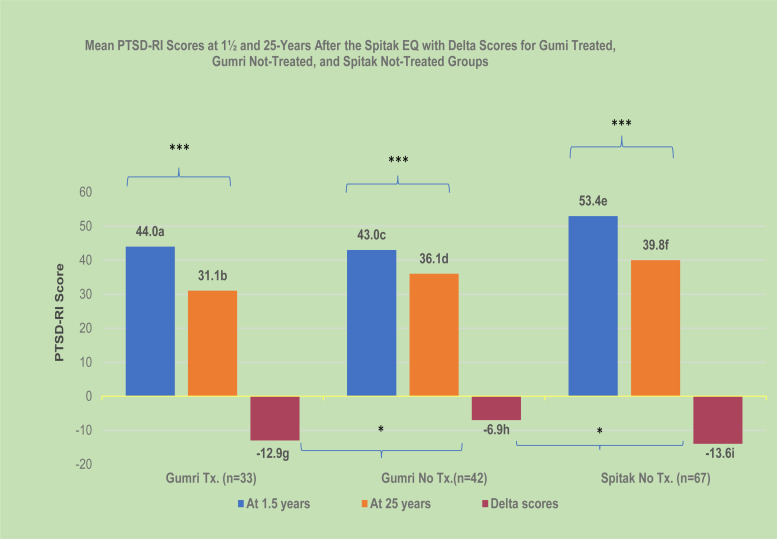Fig. 1.
Mean PTSD-RI scores at 1½ and 25 years and the delta scores for the three groups after the 1988 Spitak earthquake. *p < 0.05; ***p < 0.001. PTSD-RI, Posttraumatic Stress Disorder-Reaction Index; Tx, treatment; EQ, earthquake.
-
•A 1½ year comparison between Gumri-treated (a) and Gumri-not-treated (b) groups showed no significant difference. However, at 25 years, Gumri-treated (b) was significantly less than Gumri-not-treated (d) (t = −2.03, df = 73, p < 0.05).
-
•A 1½ year comparison between differentially exposed group scores showed Spitak-not-treated (e) was higher than Gumri-not-treated (c) (t = 6.14, df = 107, p < 0.001). At 25 years there was no significant difference between the two groups, even though the mean score for Spitak was higher (f > d) (t = 1.43, df = 107, p = 0.15).
-
•Within group by time analysis showed a significant decrease of PTSD-RI scores for the three groups between 1½ and 25 years: Gumri-treated (a > b) (t = 6.0, df = 32, p < 0.001); (b) Gumri-not-treated (c > d) (t = 4.0, df = 41, p < 0.001); (c) Spitak-not-treated (e > f) (t = 7.05, df = 66, p < 0.001).
-
•Between group comparisons of the delta in PTSD-RI scores: Gumri-treated (g) greater than Gumri-not-treated (h) (t = 2.23, df = 73, p < 0.03); Spitak-not-treated (i) greater than Gumri-not-treated (h) (t = 2.42, df = 107, p < 0.02).

